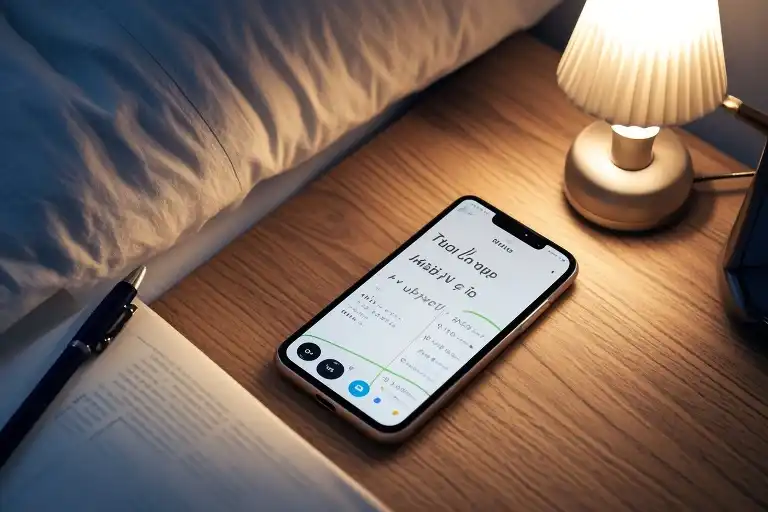There’s a peculiar alchemy that happens when the clock is ticking down. That moment when ideas suddenly crystallize, when solutions emerge from the chaos, when what felt impossible yesterday flows effortlessly today. You’ve likely experienced this phenomenon—the deadline miracle where pressure somehow unlocks hidden creative reserves.
What if this magic wasn’t reserved for last-minute emergencies? What if we could harness that creative intensity without the panic? The truth contradicts everything we’ve been taught about creativity: structure doesn’t stifle inspiration—it architects it.
The greatest myth about creative work is that it requires absolute freedom. We imagine poets waiting for muses in sunlit gardens, painters spontaneously throwing color at canvases. But examine any prolific creator’s routine—from Maya Angelou’s hotel room writing rituals to Beethoven’s meticulously timed composing sessions—and you’ll find deliberate structure. Time management isn’t the enemy of creativity; it’s the invisible scaffolding holding up your best ideas.
This isn’t about squeezing your imagination into spreadsheets. It’s about designing a framework where creativity thrives. When a jazz musician improvises, they’re not playing randomly—they’re operating within musical structures that actually enable greater freedom. Your creative mind works the same way. The right constraints don’t limit; they focus.
Over the next sections, we’ll dismantle three dangerous myths about creativity and productivity, then rebuild a system where they amplify each other. You’ll discover how designers use “chaos scheduling” to balance structure with spontaneity, how writers leverage biological creativity cycles, and how programmers turn time pressure into an innovation catalyst.
The most successful creatives aren’t those who wait for inspiration—they’re the ones who’ve learned to schedule it. Let’s explore how you can transform time from adversary to ally, starting with why your brain secretly craves constraints.
Why Creative Work Thrives Within Time Frames
The notion that creativity requires complete freedom is one of the most persistent myths in modern work culture. Cambridge researchers found that writers working within structured timelines produced 23% more original ideas than those without constraints. This isn’t about putting creativity in a cage—it’s about building scaffolding that allows ideas to climb higher.
Consider jazz improvisation. The greatest musical innovations happen within specific chord progressions and time signatures. Miles Davis didn’t abandon structure; he mastered it so thoroughly that he could bend the rules with purpose. Your creative work operates similarly. Time boundaries create the necessary tension between freedom and discipline where breakthrough ideas emerge.
The Psychology of Creative Constraints
Our brains respond paradoxically to limitations. When faced with open-ended possibilities, the prefrontal cortex often becomes overwhelmed, leading to decision fatigue. But introduce thoughtful constraints—a ninety-minute window, a single problem to solve—and the mind begins making unexpected connections. This explains why ‘creativity sprints’ often yield better results than marathon brainstorming sessions.
Are You a Wanderer or a Sprinter?
Creative people generally fall into two patterns:
- Wanderers prefer meandering exploration, collecting ideas like seashells on a beach
- Sprinters work best in concentrated bursts of focused energy
Neither approach is superior, but recognizing your natural rhythm allows you to design time structures that complement rather than conflict with your creative process. If you’re a wanderer, you might schedule several short creative sessions throughout the day. Sprinters might block off entire mornings for deep work.
This isn’t about forcing yourself into someone else’s productivity mold. It’s about discovering the time containers that make your particular brand of creativity flourish. The most effective time frames for creative work often mirror our natural attention cycles—typically 90-120 minutes of focused work followed by restorative breaks.
What many resist is the idea that structure could actually liberate creativity rather than stifle it. But the blank page is terrifying because it offers no starting point. A well-designed time frame gives you edges to push against, a defined space within which to play. Tomorrow’s unstructured ‘free time’ often becomes today’s procrastination, while a scheduled ‘creative hour’ becomes a sacred space for making things happen.
Building Your Creativity Accelerator (Time→Creativity)
The most productive creative minds don’t wait for inspiration – they build systems to manufacture it on demand. This isn’t about rigid schedules crushing spontaneity, but rather creating the optimal conditions where breakthrough ideas can reliably emerge. Think of it as installing a creativity faucet you can turn on when needed.
The Science of Focused Sprints
That magical 90-minute focused session followed by 30 minutes of deliberate rest isn’t arbitrary. It aligns with our ultradian rhythms – the natural ebb and flow of human concentration. During these sprints, you’re not just producing work; you’re training your brain to enter creative flow states more easily over time.
Try this experiment: For your next creative project, break work into three distinct phases:
- Preparation (15 min): Gather all necessary materials and eliminate potential interruptions
- Deep Work (90 min): Single-task with intense focus using full-screen writing tools or analog notebooks
- Incubation (30 min): Take a walk, doodle, or do mundane tasks while subconscious processing occurs
Crafting Your Creative Environment
Your physical and digital workspace significantly impacts creative output. Consider these adjustments:
Physical Space:
- Lighting: Cool white light (5000K) for analytical tasks, warm (2700K) for brainstorming
- Sound: Brown noise (deeper than white noise) for concentration, instrumental music for ideation
- Movement: Standing desk for energetic phases, cozy chair for reflective work
Digital Space:
- Use website blockers (like Freedom or Cold Turkey) during sprints
- Install distraction-free writing apps (iA Writer, Bear)
- Create separate user profiles for creative vs administrative work
When Ideas Won’t Come
Every creator faces drought periods. Instead of forcing it, try these reset techniques:
The 5-Minute Random Word Spark:
- Set a timer for 5 minutes
- Generate 20 random words (use a word generator if stuck)
- Force connections between these words and your project
- Note any surprising associations – these often contain breakthrough insights
The Perspective Shift:
- Rewrite your problem as a newspaper headline from 2050
- Explain your challenge to an imaginary 10-year-old
- Describe your project using only metaphors
Remember, these time-based creativity techniques aren’t about perfection. Some days the ideas will flow effortlessly; other sessions might feel like wringing water from stone. What matters is showing up consistently – the muse favors the prepared mind.
Reconstructing Time Through Creative Lens
The most profound time management breakthroughs often come when we stop treating schedules as rigid containers and start seeing them as dynamic ecosystems. This shift requires applying creative thinking to how we structure our work – not just what we put on our calendars, but how we fundamentally relate to time itself.
The Energy-Based Priority Matrix
Traditional to-do lists fail creative professionals because they operate on a false assumption: that all tasks require equal mental resources. The creative mind doesn’t work in linear, interchangeable units. Some days you’re wired for deep conceptual work, other days only for mechanical execution.
Try this instead:
- Categorize tasks by mental demand (High/Low Energy)
- Tag them with your optimal creative state (Divergent/Convergent Thinking)
- Match them to your natural energy fluctuations throughout the day
A content strategist might structure their week like this:
- Morning Energy Peaks (Divergent): Brainstorming campaign themes
- Post-Lunch Lulls (Convergent): Editing existing copy
- Evening Resurgence (Divergent): Sketching rough concepts
This approach acknowledges what creative workers know intuitively – that forcing analytical work during flow states wastes creative potential, while attempting brainstorming during energy dips produces mediocre results.
The Idea Bank System
Creative output follows a natural lifecycle that traditional productivity systems ignore. The three-phase ‘Capture-Evaluate-Incubate’ workflow mirrors how ideas actually develop:
Capture Phase
- Maintain multiple intake channels (voice memos, notebook spreads, digital whiteboards)
- Record ideas without judgment – quantity over initial quality
- Example: A UX designer collects 50+ rough interaction concepts before weekly review
Evaluate Phase
- Schedule regular ‘curation sessions’ (weekly/biweekly)
- Use objective criteria: novelty, feasibility, alignment with goals
- Case Study: A novelist reduces 300 scene ideas to 40 viable candidates
Incubate Phase
- Allow top candidates to mature before execution
- Use passive processing (sleep, unrelated activities)
- Real-world Impact: An ad agency reports 28% stronger concepts after implementing mandatory 48-hour incubation periods
Nonlinear Workflow in Action
Consider how a software team transformed their product cycles:
- Replaced rigid sprints with ‘creative capacity tracking’
- Allocated 30% of time for unscheduled exploration
- Implemented ‘error mining’ sessions to repurpose bugs as innovation sparks
The results? Faster iteration (40% cycle time reduction) and unexpected feature breakthroughs. Their secret wasn’t more discipline – it was designing time structures that honored how creativity actually unfolds.
The paradigm shift is simple yet radical: Stop asking ‘How can I fit creativity into my schedule?’ and start asking ‘How can my schedule emerge from creative rhythms?’ When time management becomes an extension of creative thinking rather than its constraint, productivity transforms from a numbers game to an art form.
Your Profession-Specific Solutions
The relationship between time management and creativity manifests differently across professions. While the core principles remain consistent, the application requires tailored approaches. Here’s how writers, designers, and developers can adapt these strategies to their unique workflows.
For Writers: Chapter Sprints & Idea Triggers
Writers often struggle with the tension between structured output and creative flow. The chapter sprint method addresses this by breaking projects into focused 90-minute writing bursts followed by 30-minute ‘idea incubation’ periods. During these sprints:
- Use distraction-free tools like FocusWriter or Cold Turkey Writer to maintain flow state
- Set micro-goals (e.g., 500 words or one character development scene) rather than vague ‘write more’ targets
- Keep an ‘idea compost’ document open alongside your main manuscript for random inspirations
When facing blocks, implement the 5-minute random stimulus technique: open a dictionary to a random page and force a connection between your writing topic and the first noun you see. This cognitive jolt often bypasses creative resistance.
For Designers: Feedback Integration & Mood Board Cycling
Design workflows demand constant iteration. Create a ‘client feedback timetable’ that schedules:
- 15-minute daily review slots for incoming comments
- Themed workdays (e.g., Mondays for typography experiments, Wednesdays for color palette refinement)
- 45-minute ‘chaos hours’ for unrestricted exploration with tools like Miro or Figma
For visual thinkers, maintain rotating digital mood boards (Pinterest works) and physical inspiration walls. The act of periodically refreshing these stimuli prevents creative stagnation without requiring massive time investments.
For Developers: Code Experiments & Error Mining
The nonlinear nature of coding benefits from ‘error log creativity sessions.’ Instead of viewing bugs as failures:
- Schedule weekly 60-minute ‘bug exploration’ blocks to deliberately break your code in new ways
- Maintain an ‘unexpected outcomes’ journal documenting interesting errors that could inspire future features
- Use the Pomodoro technique (25 minutes coding, 5 minutes reviewing error patterns)
For feature development, implement ‘code sprints’ where you:
- Write intentionally imperfect prototype code for 45 minutes
- Spend 15 minutes identifying one elegant refinement
- Repeat for three cycles before traditional debugging
This approach leverages time pressure to stimulate inventive problem-solving while preventing perfectionism paralysis.
Each profession shares the common thread of structured flexibility – creating containers for creativity to flourish without letting time become either a tyrant or an afterthought. The tools differ, but the principle remains: your best work emerges when you stop fighting the clock and start collaborating with it.
The Blueprint in Your Hands
What began as an exploration of time and creativity has now crystallized into something tangible—a complete blueprint for transforming structured time into creative fuel. The paradox we initially confronted—that constraints might actually liberate creativity—has unfolded into a practical system where schedules and spontaneity coexist. You’re now equipped not just with theories, but with living frameworks that adapt to your unique rhythm.
Consider trying a small experiment tomorrow: a 15-minute micro-sprint. Choose one creative task—perhaps drafting email copy, sketching a wireframe, or brainstorming code architecture. Set a visible timer, eliminate all distractions (yes, that means silencing Slack), and commit to focused creation until the bell rings. Notice how this contained pressure differs from both aimless tinkering and frantic last-minute work. Many discover their first micro-sprint yields disproportionate results—what psychologists call the “goal gradient effect,” where defined endpoints accelerate effort.
The true test lies beyond reading. Creativity thrives when shared and scrutinized. We invite you to document your sprint experiences—the breakthroughs and roadblocks—using #MyCreativeSprint. How did a designer remix the 90-minute deep work formula when presenting concepts to clients? What adjustments did a novelist make to the priority matrix when dealing with publisher deadlines? These real-world adaptations become the collective wisdom that refines the system for everyone.
Remember, this isn’t about rigid adherence. The writer who thrives on chaotic morning pages and the developer who needs precisely spaced debugging intervals both prove the same truth: time management serves creativity when customized. Your most valuable contribution might be breaking one of these “rules” to discover something better suited to your craft. The tools are here not as shackles, but as scaffolding—meant to be dismantled and rebuilt as your creative evolution demands.
Before you close this page, do one thing: glance at your calendar and block one creativity sprint within the next 48 hours. Not someday. Not when things calm down (they won’t). The bridge between insight and output gets built one scheduled session at a time. Your future self—the one who shipped that project, solved that stubborn problem, or finally trusted their creative process—is waiting to thank you for starting today.





